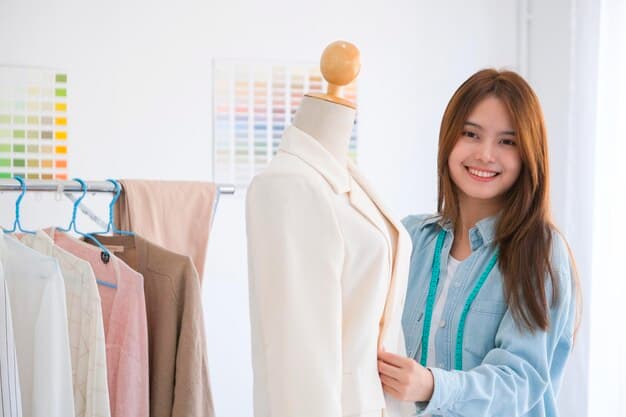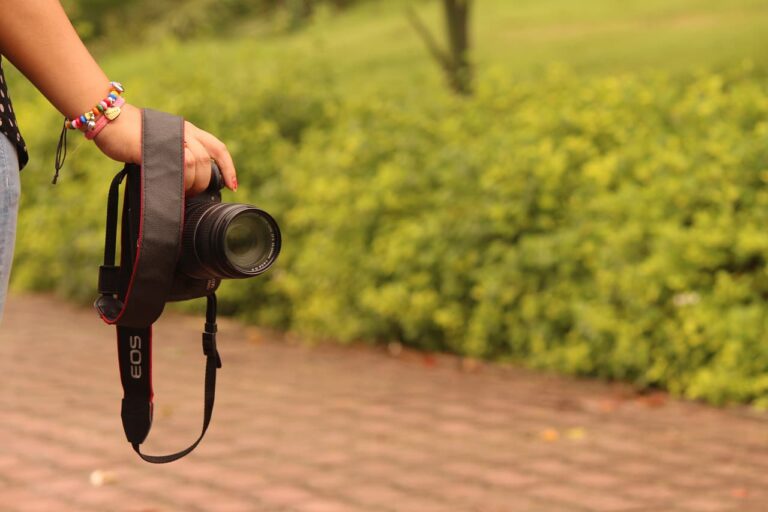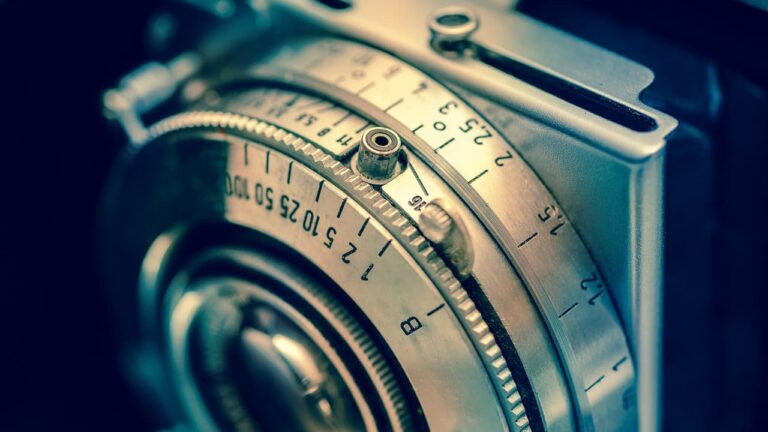Introduction
Fashion is more than just glamorous runway shows and flashy magazine spreads. It’s a thriving, multi-faceted industry with an array of career paths to explore. If you’re passionate about fashion but aren’t sure where to start, this guide is for you.
Identifying Your Dream Fashion Career
To embark on your dream fashion career, it’s essential to recognize the diverse roles available and assess your strengths, interests, and preferences. This guide will help you navigate the first crucial steps towards finding your ideal fashion career.
Understanding the Fashion Industry Landscape
Before delving into identifying your dream fashion career, it’s important to realize that the fashion industry encompasses a wide range of roles. These roles extend beyond just fashion designers and models. Here are some key positions within the industry:
| Fashion Role | Responsibilities |
|---|---|
| Fashion Buyer | Selects and purchases fashion items to stock in stores, ensuring they align with the brand’s vision. |
| Fashion Stylist | Curates outfits and looks, often for photo shoots, celebrities, or fashion events. |
| Fashion PR | Manages public relations for fashion brands, designers, and products, handling media and brand image. |
| Fashion Marketing | Develops and implements marketing campaigns to promote fashion brands and products. |
| Fashion Journalism | Writes articles and content for fashion magazines, blogs, newspapers, or digital media platforms. |
Evaluating Your Strengths and Interests
To begin your journey towards a dream fashion career, take time to evaluate your strengths and interests. Reflect on your skills, passions, and personal preferences. Consider the following questions:
- What are your strengths? Identify the skills and talents that come naturally to you. Are you creative, analytical, or detail-oriented?
- What interests you about the fashion industry? Determine what aspects of fashion appeal to you the most. Is it the creative process of designing, the marketing and promotion of fashion brands, or the behind-the-scenes logistics?
- What kind of work environment do you prefer? Consider whether you envision yourself working with a luxury brand, a retail store, a high-street label, or even in the fast-paced world of fashion journalism.
Narrowing Down Your Choices
Once you’ve gained clarity on your strengths, interests, and preferred work environment, you can begin to narrow down your choices within the fashion industry. Here are some steps to help you in this process:
| Topic | Description |
|---|---|
| Research Fashion Careers | Explore in-depth information about various fashion careers. Learn about the day-to-day responsibilities, required skills, and potential career growth for each role. |
| Network | Connect with professionals already working in the fashion industry. Attend industry events, workshops, or conferences to gain insights and build valuable contacts. |
| Education and Training | Consider whether you need specific education or training to pursue your chosen fashion career. Some roles may require formal education, while others may value experience and creativity. |
| Internships and Apprenticeships | Gain practical experience through internships or apprenticeships. This hands-on experience can provide valuable insights and help you decide if a particular career path is the right fit. |
| Set Goals | Establish short-term and long-term career goals. Outline the steps you need to take to achieve these goals, such as acquiring relevant skills or certifications. |
| Stay Updated | Keep up with industry trends, fashion news, and emerging technologies. The fashion industry is constantly evolving, so staying informed is crucial. |
| Seek Guidance | Consider seeking guidance from career counselors or mentors who can provide valuable advice and support in your journey. |
Analyzing the Fashion World
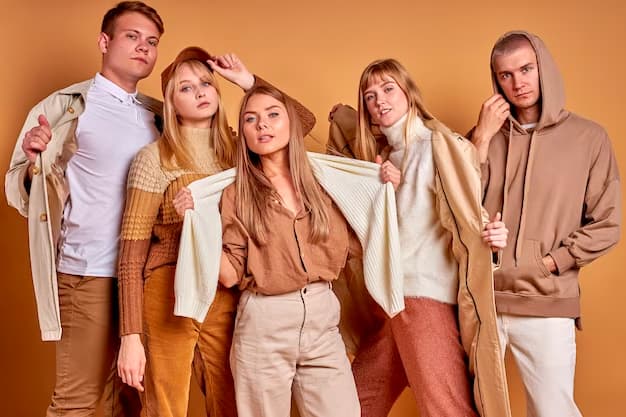
To succeed in the world of fashion, it’s crucial to develop an analytical mindset that goes beyond appreciating stylish outfits. This guide will delve into the importance of understanding the ‘why’ behind fashion trends, strategies, and the placement of advertisements and products. We will explore key concepts and techniques that can help you analyze and navigate the fashion world effectively.
Understanding the Significance of Analytical Thinking
Analytical thinking is the cornerstone of success in the fashion industry. It involves the ability to critically evaluate and dissect various aspects of the fashion world, such as trends, consumer behavior, and marketing strategies. Here are some key reasons why analytical thinking is essential:
- Identifying Market Trends: Analyzing fashion trends enables you to stay ahead of the curve and anticipate consumer preferences. This involves studying runway shows, street style, and social media to identify emerging styles and themes.
- Effective Decision-Making: Analytical thinking empowers you to make informed decisions regarding product selection, pricing, and marketing. It helps you prioritize strategies that align with your brand’s goals.
- Competitive Advantage: Understanding the ‘why’ behind successful fashion brands and trends allows you to differentiate yourself in a crowded market. You can create unique offerings that resonate with your target audience.
- Adaptation to Change: The fashion industry is known for its rapid changes. Analytical thinking helps you adapt to evolving consumer preferences, economic shifts, and global events.
Analyzing Fashion Advertisements
Advertisements play a pivotal role in the fashion industry, shaping consumer perceptions and driving sales. Analyzing them can provide valuable insights into marketing strategies and brand positioning. Here’s how to dissect fashion advertisements effectively:
- Visual Elements: Examine the visual components of advertisements, including photography, models, and styling. Consider how these elements convey the brand’s identity and message.
- Message and Storytelling: Identify the underlying message or story in the advertisement. What emotions or values is the brand trying to evoke in the audience? How does it connect with the target demographic?
- Placement and Context: Consider where the advertisement is displayed. In magazines like Vogue, the placement of ads is often strategic. Analyze the context in which the ad appears and its relevance to the editorial content.
- Call to Action: Look for a call to action in the ad. Is the audience encouraged to visit a website, make a purchase, or engage with the brand on social media? Assess the effectiveness of the call to action.
Decoding Product Placements in Stores
In physical retail spaces, the strategic placement of products can significantly impact sales and customer experience. When walking into a store, here’s how to analyze product placements:
- Traffic Flow: Observe how customers move through the store. High-traffic areas near entrances and popular sections are prime locations for showcasing new arrivals or high-margin items.
- Visual Merchandising: Pay attention to the visual merchandising techniques employed. Are products arranged by color, style, or theme? Visual cues like mannequins and displays can influence purchasing decisions.
- Cross-Selling and Complementary Products: Analyze whether the store encourages cross-selling by placing related products in proximity. For example, pairing shoes with handbags or accessories with clothing.
- Promotions and Discounts: Examine the placement of discounted items. Are they strategically positioned to attract bargain-hunting customers? How do these placements affect overall sales?
Tools and Resources for Fashion Analysis
To enhance your analytical skills in the fashion world, consider utilizing the following resources:
- Fashion Magazines: Subscribe to fashion magazines like Vogue, Harper’s Bazaar, and Elle to stay updated on industry trends and advertising strategies.
- Online Communities: Join fashion forums, social media groups, and blogs to engage with fellow fashion enthusiasts and gain insights into emerging trends.
- Retail Store Visits: Regularly visit fashion retail stores to observe product placements and visual merchandising in action.
- Fashion Analytics Software: Explore data analytics tools that provide insights into consumer behavior, market trends, and sales performance.
Internships: Your Foot in the Door

Internships are a pivotal stepping stone towards establishing a successful career in the fashion industry. They provide an opportunity to gain practical experience, acquire essential skills, and establish valuable connections. Let’s explore the importance of internships in the fashion world, including their significance, what to expect, and how to financially prepare for them.
Significance of Fashion Internships
Fashion internships are a fundamental component of career development in this competitive industry. Here’s why they matter:
- Hands-On Experience: Internships offer a hands-on learning experience that goes beyond classroom education. You’ll gain practical skills, such as garment construction, pattern making, or fashion marketing, that are crucial for future employment.
- Networking: Internships provide the opportunity to build relationships with industry professionals, including designers, buyers, and stylists. These connections can be invaluable when seeking future job opportunities.
- Industry Insights: Working as an intern allows you to gain insights into the inner workings of the fashion world, from design studios to retail spaces. You’ll learn about industry trends, consumer behavior, and the creative process.
- Resume Enhancement: Internship experience enhances your resume and makes you a more attractive candidate for permanent positions. It demonstrates your commitment to the field and your ability to apply theoretical knowledge in real-world settings.
Expectations During Fashion Internships
Internships in the fashion industry vary widely, depending on the specific role and company. Here are some common expectations:
- Job Roles: Internships can encompass various roles, including fashion design, merchandising, marketing, styling, and production. Determine your area of interest and seek internships accordingly.
- Duration: Fashion internships typically last from a few weeks to several months. Longer internships may provide more in-depth experiences.
- Tasks and Responsibilities: Expect to perform a range of tasks, from assisting designers with sketches to organizing fashion shows or managing social media accounts. Internships often involve a mix of administrative work and creative projects.
- Mentorship: Look for internships that offer mentorship opportunities. Working closely with experienced professionals can accelerate your learning and skill development.
- Company Culture: Each fashion company has its own culture and work environment. Research companies before applying to find a cultural fit that aligns with your values and career goals.
Financial Preparation for Fashion Internships
It’s essential to be financially prepared for fashion internships, as many of them may be unpaid or offer minimal stipends. Here’s how to plan for the financial aspect:
- Budgeting: Create a budget that includes living expenses, transportation, and any internship-related costs. Be realistic about your financial needs during the internship period.
- Savings: Save money before starting your internship to cover living expenses and unforeseen costs. Consider part-time work or freelancing to supplement your income if needed.
- Scholarships and Grants: Look for scholarships or grants specifically designed for fashion students or interns. Some organizations offer financial assistance to support your internship endeavors.
- Alternative Housing: Explore cost-effective housing options, such as shared apartments or subletting. Consider proximity to your internship location to minimize commuting expenses.
- Financial Aid: If you’re a student, check if your college or university offers financial aid or academic credit for internships. This can help offset some costs.
Location Matters
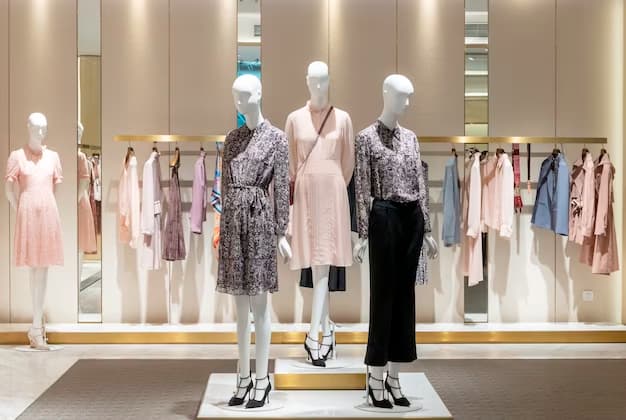
Location plays a pivotal role in the fashion industry. Certain cities are revered as global fashion capitals, and for good reason. These cities offer unparalleled opportunities for aspiring fashion professionals, from networking with industry giants to immersing oneself in fashion events and culture. Let’s delve into the importance of location in the fashion world, highlighting key cities and their unique attributes.
Fashion Capitals: The Hubs of the Industry
Fashion capitals are cities known for their thriving fashion scenes, bustling with renowned designers, prestigious fashion houses, and influential fashion events. Here are some of the most prominent fashion capitals:
- Milan, Italy: Milan is synonymous with luxury fashion and is home to iconic brands like Prada, Gucci, and Versace. It is renowned for its emphasis on craftsmanship and high-quality materials. Milan Fashion Week is a globally recognized event that attracts fashion enthusiasts and industry professionals alike.
- Paris, France: Paris is the epitome of haute couture and is where many legendary fashion houses, including Chanel, Louis Vuitton, and Dior, originated. The city’s biannual Paris Fashion Week showcases the world’s top designers and sets global fashion trends.
- New York City, USA: New York City is a melting pot of diverse fashion styles, from streetwear to high fashion. It hosts New York Fashion Week, one of the “Big Four” fashion weeks globally, featuring both established and emerging designers.
- London, United Kingdom: London is known for its innovative and avant-garde fashion. It’s home to designers such as Alexander McQueen and Vivienne Westwood. London Fashion Week is celebrated for its creativity and is a platform for emerging talent.
The Benefits of Relocating
While remote work has become more prevalent, relocating to a fashion capital offers several advantages for those aspiring to make a mark in the industry:
- Immersive Experience: Being in a fashion capital allows you to immerse yourself in the industry. You can attend fashion shows, exhibitions, and events, gaining firsthand exposure to the latest trends and designs.
- Networking Opportunities: Fashion capitals are hubs of networking opportunities. You can connect with industry professionals, potential mentors, and like-minded peers, fostering invaluable relationships.
- Access to Top Brands: If you aspire to work with major fashion brands, being in the same city can open doors to internships, job opportunities, and collaborations that remote work might not offer.
- Cultural Inspiration: Fashion capitals are not just about brands; they’re also about cultural inspiration. The cities themselves often influence designers, leading to the creation of unique and groundbreaking fashion.
- Industry Knowledge: Living in a fashion capital provides you with up-to-date industry knowledge and insights. You can witness firsthand how fashion trends evolve and adapt.
Considerations Before Relocating
Before making the decision to relocate to a fashion capital, it’s essential to consider some key factors:
- Cost of Living: Be aware that living in fashion capitals can be expensive. Research the cost of living, including housing, transportation, and daily expenses.
- Visa and Work Permissions: Ensure you have the necessary visas and work permissions to live and work in your chosen city, especially if you’re relocating from another country.
- Job Prospects: Assess the job market and the demand for your specific fashion niche in the city you plan to move to.
- Cultural Adaptation: Prepare for cultural differences and potential language barriers, depending on your chosen location.
Mastering Essential Skills
While creativity and design prowess are undoubtedly crucial, there are several other essential skills that can significantly impact your success. Let’s focus on two vital skills: Excel proficiency and language skills, and explore their importance in various fashion-related roles.
Excel Proficiency in the Fashion Industry
Excel, a powerful spreadsheet software, is indispensable in the fashion industry. It provides a versatile toolset that can be applied to a wide range of tasks, from trend forecasting to budgeting. Below are some key areas in which Excel proficiency is essential:
Trend Forecasting and Data Analysis
- Data Organization: Excel allows you to efficiently organize and manage large datasets, making it easier to identify trends and patterns in consumer behavior, sales, and market research.
- Data Visualization: You can create visual representations of data, such as charts and graphs, to present insights in a clear and compelling manner.
Inventory Management and Supply Chain
- Stock Tracking: Excel is invaluable for monitoring inventory levels, ensuring that products are available when needed, and avoiding overstocking or shortages.
- Supply Chain Optimization: It helps in optimizing the supply chain by tracking orders, shipments, and delivery schedules.
Financial Analysis and Budgeting
- Budget Planning: Fashion brands and retailers rely on Excel for budget planning, expense tracking, and financial forecasting.
- Profit Margin Analysis: You can calculate profit margins, evaluate pricing strategies, and assess the financial health of the business.
Sales and Customer Relationship Management
- Sales Reports: Excel is used to create and analyze sales reports, enabling companies to make informed decisions on sales strategies and customer targeting.
- Customer Data Management: It aids in organizing customer information and analyzing buying patterns to tailor marketing efforts.
Language Skills in the Global Fashion Industry
The fashion industry is a global marketplace with brands, suppliers, and consumers spanning different countries and cultures. Proficiency in languages, beyond just English, can give you a distinct advantage. Here’s why language skills are essential:
Communication and Collaboration
- Multinational Teams: Fashion companies often have diverse teams from around the world. Knowing additional languages facilitates effective communication and collaboration with colleagues, suppliers, and clients from different regions.
International Market Access
- Market Expansion: If you plan to work in non-English speaking countries, knowing the local language can open doors to new markets and opportunities.
- Cultural Understanding: Language proficiency is often intertwined with cultural understanding, which is crucial for successful international business relationships.
Negotiation and Networking
- Negotiations: Fluent communication in the language of your business partners can enhance your negotiation skills and build trust during discussions.
- Networking: Language skills can make networking at global fashion events and conferences more fruitful.
Networking: The Heart of Fashion
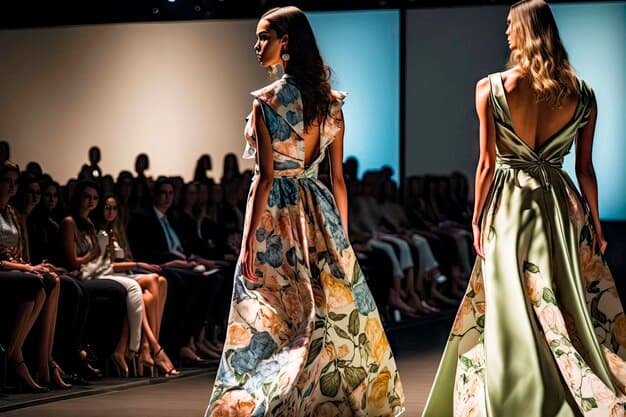
Networking is a crucial aspect of success in the fashion industry. It’s not just about your fashion sense or design skills; who you know can be just as important as what you know. Let’s delve into the importance of networking in the fashion world, providing practical tips and strategies to help you build a strong network.
Why Networking Matters in Fashion
Networking is the cornerstone of success in the fashion industry for several reasons:
- Opportunity Access: Networking opens doors to job opportunities, collaborations, and partnerships. Many fashion roles are not advertised publicly, and the best opportunities often come through personal connections.
- Industry Insights: Building a network allows you to stay updated with industry trends, emerging designers, and market changes. This knowledge is invaluable for staying competitive.
- Mentorship and Guidance: Experienced professionals can provide valuable guidance and mentorship to help you navigate the fashion world. Networking can help you find mentors willing to share their expertise.
- Feedback and Validation: Feedback from peers and industry professionals can be critical for honing your fashion sense and making improvements. Networking provides a platform for receiving constructive criticism.
Strategies for Effective Networking
Now, let’s explore some strategies for building a strong network in the fashion industry:
- Attend Industry Events: Fashion weeks, trade shows, and fashion expos are great places to meet industry professionals. These events bring together designers, models, photographers, and more.
Table: Sample List of Fashion Industry Events
| Event Name | Location | Date |
|---|---|---|
| New York Fashion Week | New York, USA | February & September |
| Paris Fashion Week | Paris, France | February & September |
| London Fashion Week | London, UK | February & September |
- Participate in Webinars and Seminars: Online events are increasingly popular. They offer opportunities to learn from experts, ask questions, and connect with attendees through chat functions.
Table : Upcoming Fashion Webinars
| Webinar Title | Date | Host |
|---|---|---|
| Sustainable Fashion | 15th March | FashionMag |
| The Art of Styling | 20th April | Vogue Academy |
- Utilize Social Media: Platforms like LinkedIn, Instagram, and Twitter are essential for networking in the digital age. Here’s how you can use them effectively:
- Create a professional LinkedIn profile with your fashion experience and accomplishments.
- Follow fashion industry leaders and engage with their content.
- Share your work and insights to establish your online presence.
- Join fashion-related groups and discussions to connect with like-minded individuals.
- Collaborate on Projects: Collaborations provide networking opportunities while working on creative projects. Partner with other designers, photographers, or models to expand your network.
The Power of Personal Connections
In the fashion industry, it’s often the personal connections that lead to breakthroughs. Your next big opportunity might arise from a casual conversation at a fashion event, a shared project, or an introduction by a mutual acquaintance. Remember that networking is an ongoing process; nurturing relationships over time is key.
Conclusion
A career in fashion is exciting and rewarding. However, like any profession, it demands dedication, continuous learning, and networking. Stay curious, be persistent, and soon, you’ll find your place in the world of fashion.
FAQs
A: While a degree can provide valuable insights and open doors, many successful fashion professionals have thrived without formal education in the field. What’s more crucial is hands-on experience, a keen understanding of the market, and an unwavering passion for fashion.
A: Salaries vary depending on the role and location. For instance, a junior designer’s salary might differ significantly from that of an entry-level PR representative. On average, entry-level roles in fashion might range from $30,000 to $50,000 annually, but this can fluctuate based on factors like company size and city costs.
A: Highly competitive. The allure of the fashion world draws many aspirants, making positions, especially with renowned brands, highly sought after. Networking, gaining relevant experience, and continuous skill development are essential.
A: Absolutely! As the fashion industry becomes more conscious of its environmental and ethical impact, roles in sustainable fashion, ethical sourcing, and eco-friendly designs are on the rise.
A: Yes! The fashion industry isn’t just about design. Roles in marketing, finance, buying, and merchandising are crucial to any fashion brand’s operations.
A: The COVID-19 pandemic has indeed shifted many industries, including fashion, towards remote work. While some roles, especially those related to hands-on design or event coordination, might require physical presence, others in areas like marketing, journalism, and administration have adapted to remote work models.
A: Subscriptions to magazines like Vogue, Elle, and GQ can be invaluable. Additionally, following fashion influencers on social media, attending industry events, and even observing street fashion can provide insights into emerging trends.
